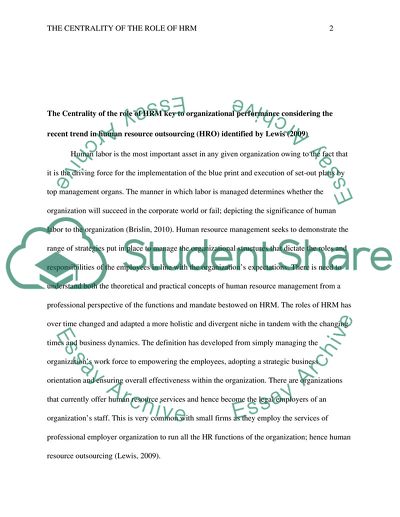Cite this document
(The Centrality of the Role of Human Resource Management Key to Assignment, n.d.)
The Centrality of the Role of Human Resource Management Key to Assignment. Retrieved from https://studentshare.org/human-resources/1660988-how-central-is-the-role-of-hrm-key-to-organisational-performance-considering-the-recent-trend-in-human-resource-outsourcing-hro-identified-by-lewis-2009
The Centrality of the Role of Human Resource Management Key to Assignment. Retrieved from https://studentshare.org/human-resources/1660988-how-central-is-the-role-of-hrm-key-to-organisational-performance-considering-the-recent-trend-in-human-resource-outsourcing-hro-identified-by-lewis-2009
(The Centrality of the Role of Human Resource Management Key to Assignment)
The Centrality of the Role of Human Resource Management Key to Assignment. https://studentshare.org/human-resources/1660988-how-central-is-the-role-of-hrm-key-to-organisational-performance-considering-the-recent-trend-in-human-resource-outsourcing-hro-identified-by-lewis-2009.
The Centrality of the Role of Human Resource Management Key to Assignment. https://studentshare.org/human-resources/1660988-how-central-is-the-role-of-hrm-key-to-organisational-performance-considering-the-recent-trend-in-human-resource-outsourcing-hro-identified-by-lewis-2009.
“The Centrality of the Role of Human Resource Management Key to Assignment”, n.d. https://studentshare.org/human-resources/1660988-how-central-is-the-role-of-hrm-key-to-organisational-performance-considering-the-recent-trend-in-human-resource-outsourcing-hro-identified-by-lewis-2009.


